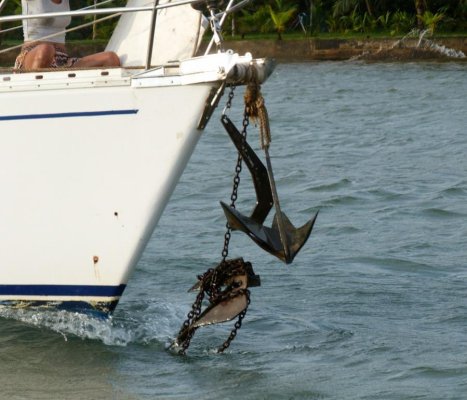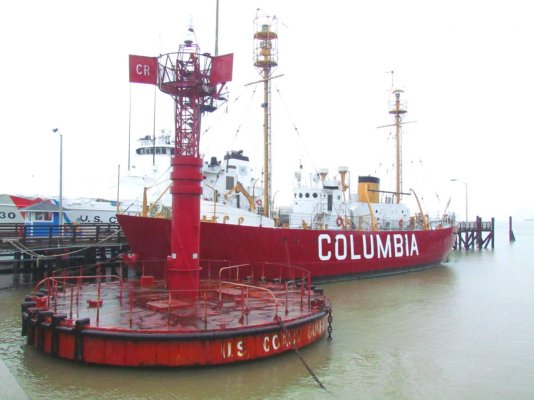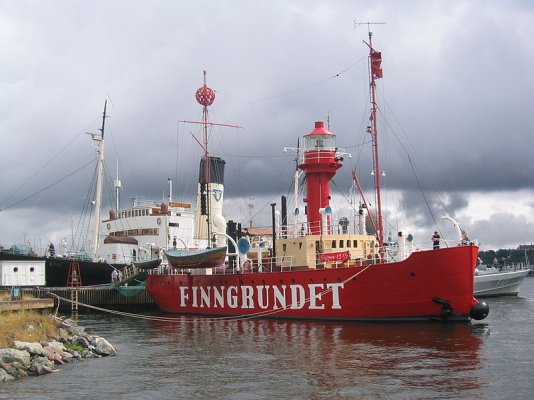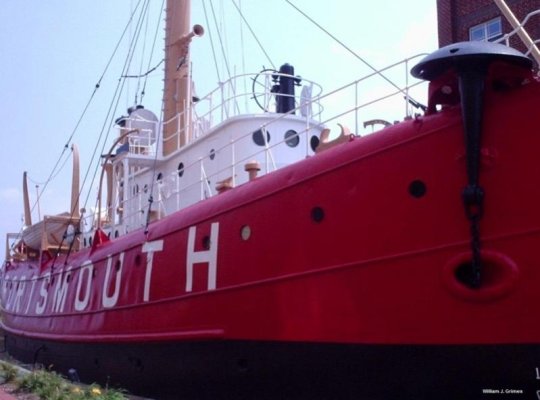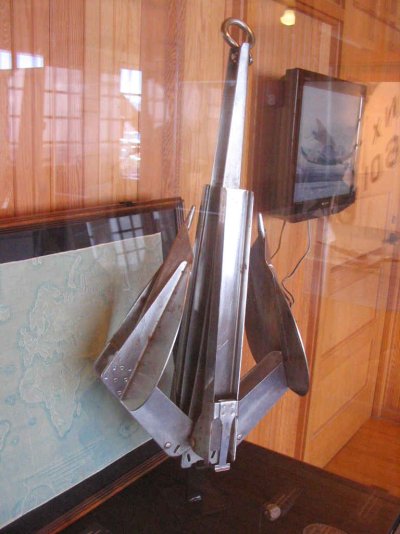Adjacent to the above wikipedia photo, it says:
Mushroom anchor
The mushroom anchor is suitable where the seabed is composed of silt or fine sand. It was invented by
Robert Stevenson, for use by an 82-ton converted fishing boat,
Pharos, which was used as a
lightvessel between 1807 and 1810 near to
Bell Rock whilst the
lighthouse was being constructed. It was equipped with a 1.5-ton example.
It is shaped like an inverted mushroom, the head becoming buried in the silt. A counterweight is often provided at the other end of the shank to lay it down before it becomes buried.
A mushroom anchor will normally sink in the silt to the point where it has displaced its own weight in bottom material, thus greatly increasing its holding power. These anchors are only suitable for a silt or mud bottom, since they rely upon suction and cohesion of the bottom material, which rocky or coarse sand bottoms lack. The holding power of this anchor is at best about twice its weight until it becomes buried, when it can be as much as ten times its weight. They are available in sizes from about 10 lb up to several tons.
Deadweight anchor
This is an anchor which relies solely on being a heavy weight. It is usually just a large block of concrete or stone at the end of the chain. Its holding power is defined by its weight underwater (i.e. taking its buoyancy into account) regardless of the type of seabed, although suction can increase this if it becomes buried. Consequently deadweight anchors are used where mushroom anchors are unsuitable, for example in rock, gravel or coarse sand. An advantage of a deadweight anchor over a mushroom is that if it does become dragged, then it continues to provide its original holding force. The disadvantage of using deadweight anchors in conditions where a mushroom anchor could be used is that it needs to be around ten times the weight of the equivalent mushroom anchor.


